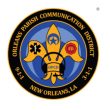Motorola’s BPL solution receives UL approval
Motorola’s Powerline LV modem this week received approval from Underwriters Laboratories (UL), meaning the vendor giant can begin shipping its broadband over power line (BPL) solution in the next month, company officials said.
UL approval also will let Motorola continue its testing with ARRL, the national association for the amateur radio community, said Dick Illman, a member the advanced wireless team in Motorola special markets division of engineering.
ARRL has been vocal in its criticism of many BPL systems that generate interference-causing emissions from broadband signals being transmitted over medium-voltage power lines. Motorola’s Powerline LV solution avoids this problem by using a Canopy wireless architecture to transmit the broadband signal to the transformer server an area, from which only low-voltage wires are used.
Although Motorola halted its tests with ARRL while seeking UL approval, tests conducted in the fall with ARRL were “perfect—there was no interference” to the BPL system or ham operations, Illman said.
In addition to removing medium-voltage lines from the interference equation, Powerline LV also utilizes notching—a practice used successfully by BPL vendor Current Technologies—to prevent transmissions on frequencies that could cause problems,” said Mary Ashe, business development manager for Motorola.
“Our system gives an additional level of confidence to a utility provider,” Ashe said. “We’ve proactively taken care of that, so that virtually don’t need to worry about getting complaints and needing to shut down to address them.”
ARRL has not endorsed the Powerline LV solution but officials for the association expressed optimism that it would be a BPL system that could coexist effectively with ham-radio operations. Illman said the organization has cited the Motorola solution “as an example to the FCC as to how it can be done right.”

















